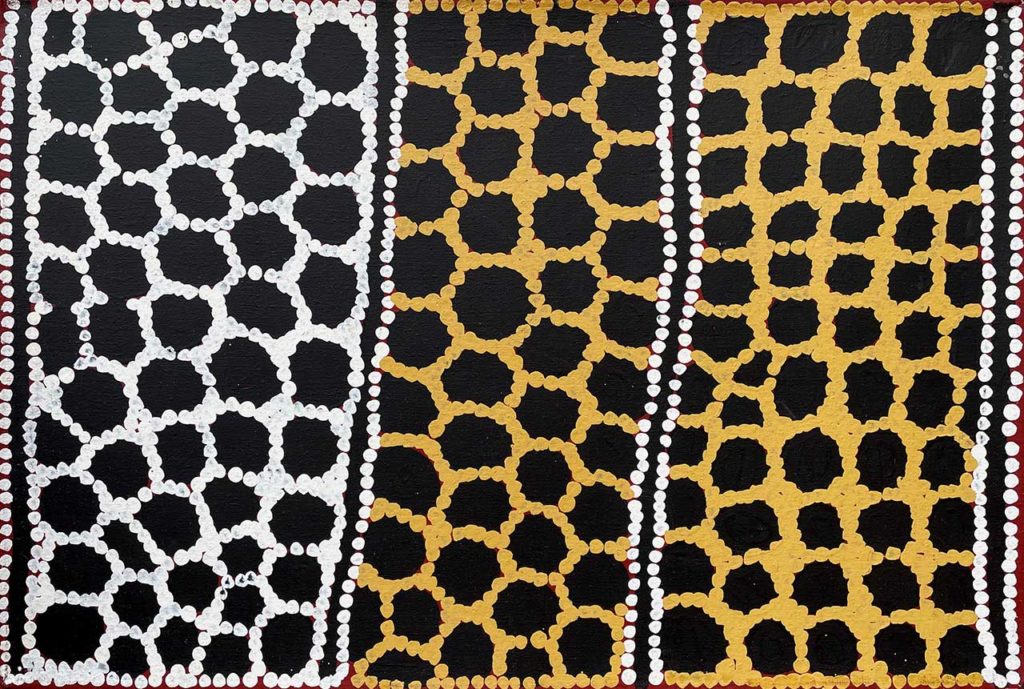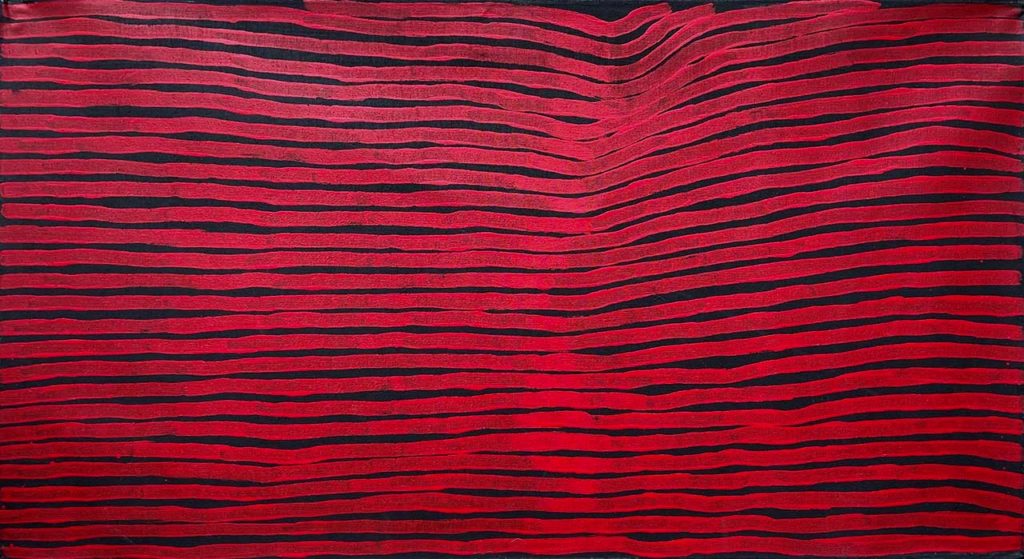My Memories of Dr George Ward Tjapaltjarri
Roslyn Premont is the Director of Gallery Gondwana in Alice Springs. She first met Dr George Ward Tjapaltjarri when she ran the government gallery, the Centre for Aboriginal Artists, in 1972. That gallery was the focal point for Aboriginal people coming to Alice Springs. People from various communities would drop by to ask who else was in town.
Roslyn then started Gallery Gondoana and Dr George kept in touch by dropping in for cups of tea when he was in Alice Springs. The Gallery started its own studio, and Dr George asked for canvas and started painting. He would paint at that studio when he came to town. Dr George moved around a lot, dividing his time between Titjikala, Kintore and Jupiter Well. Roslyn talks here about her memories of this man as a highly respected elder, artist and traditional healer.
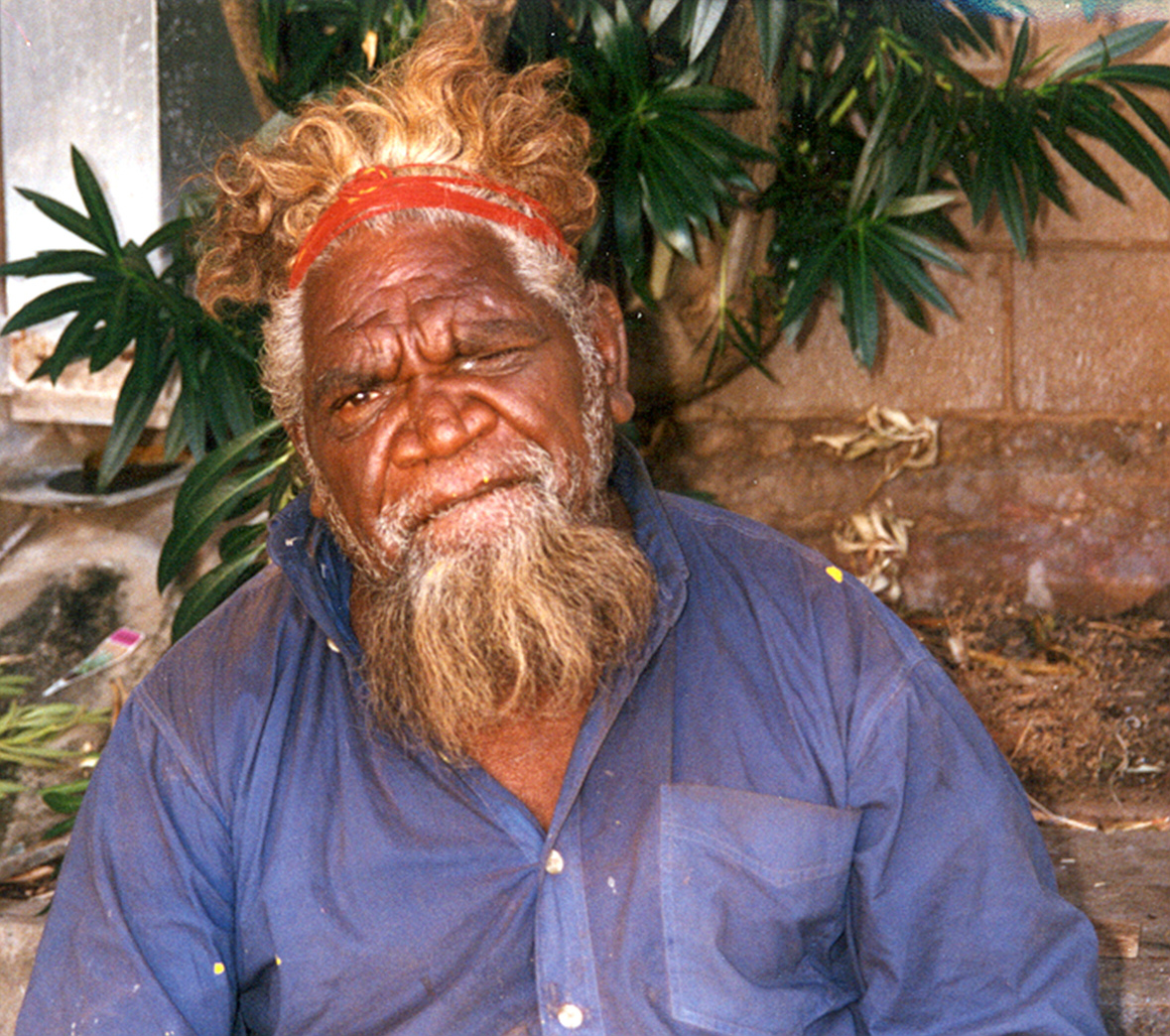
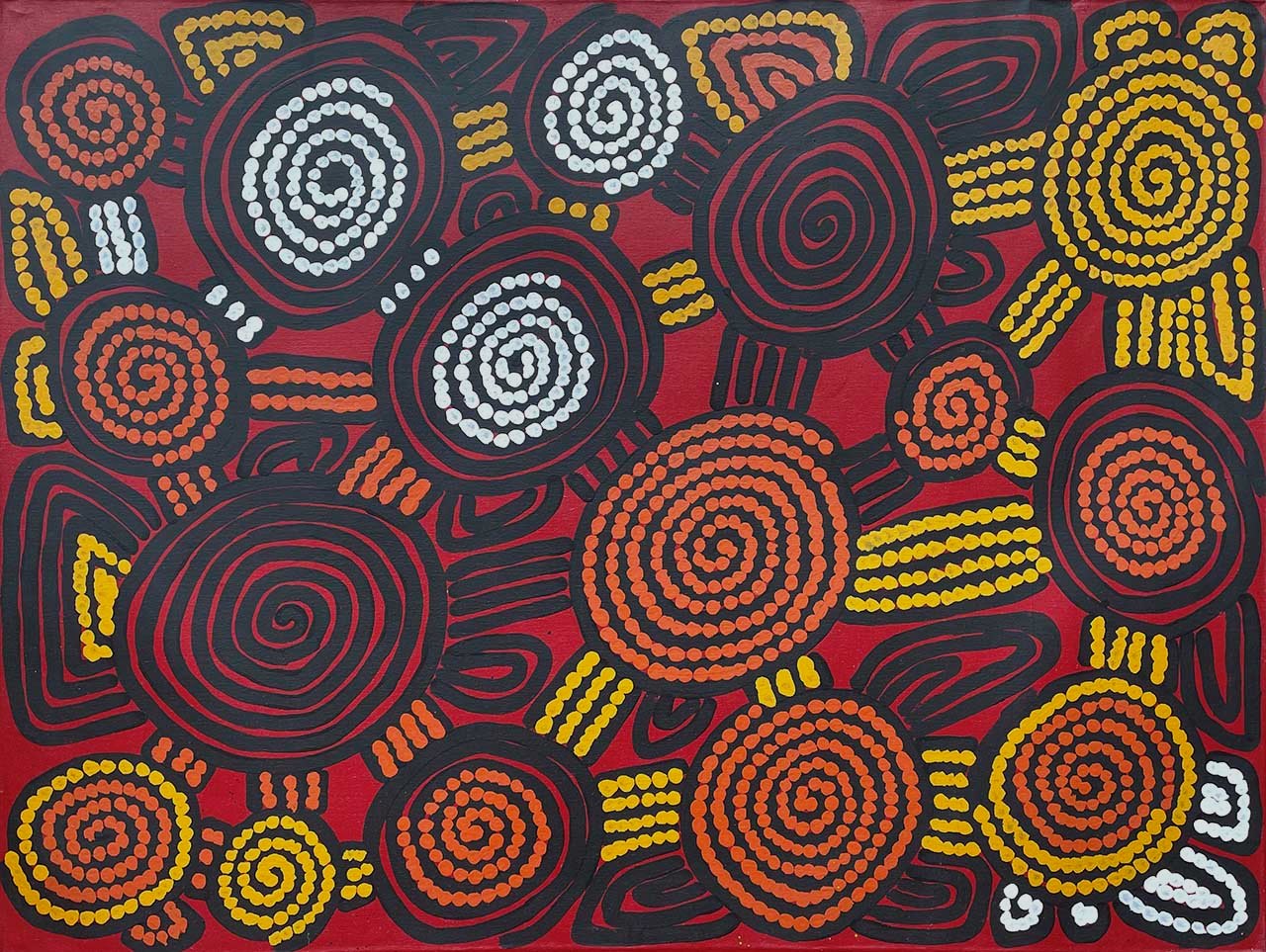
Dr George Ward Tjapaltjarri was known by a couple of names. What were they?
They call Dr George Tjapaltjarri Ward, Dr George (Takara) Tjapaltjarri. Doctor was pronounced doc-a-tor. Local people used to often ask, "Is Doc-a-tor there?" Many people just called him Dr George or just Doctor.
What is known about his place and date of birth?
He was born southwest of Jupiter Well around 1930.
Can you describe the type of country you find there?
It is vast sandhill and rocky outcrop terrain.
When did Dr George Ward Tjapaltjarri first meet white people?
He lived around Jupiter Well until the early 1960s, when contact was made with white society. He would have been part of a group that included several families. In that first contact, he saw Jeremy Lee Long, who was the Patrol Officer who brought a lot of the different people in from the desert. Along with Nose Peg, who was an extraordinary man who worked alongside Jeremy Long to make desert people feel comfortable about coming into settlements from the desert.
How did he come to be referred to as Doctor. Was he a healer?
He was a traditional healer. He was also a very respected spiritual leader. That was prior to contact with whites. He was considered the most respected healer in the whole area. He was known everywhere. Everyone knew him as being an important man, a traditional healer, the word for that is Ngangkari. He practised medicine using secret techniques that remained unchanged for a very long time.
In the sixties, when he came in contact with Nose Peg and Jeremy Long, his group came into what is now Titjikala, Kintore region. There were white doctors who came out there and Dr George was instrumental in making desert people feel comfortable about seeing white doctors. The white doctors gave him the title of Doctor. They called him Dr George. That's how he got the name Doctor. During his lifetime he was always considered one of the most powerful Aboriginal men alive.
Top Featured Image: Dr George Tjapaltjarri | Rockholes and Malliera | Jap 019945
What type of traditional ceremonies did he take part in?
There were a lot of them. We don't know the full details of them because they were secret. There were men's initiation ceremonies. Malliera ceremonies, teaching young men. These happened in underground caves where a group of men and boys gathered. They carried fire sticks during those ceremonies, and so often, the use of the linear marks in his paintings is to represent those fire sticks. They're also the scarification on the men's bodies.
While his paintings may be very abstract looking, there's a strong narrative to his work. You have white, yellow or red roundels that are part of the both ceremonial body designs, and also the rocky outcrop terrain of the site where it's happening. There are various sites, there's one important site for this, which is called Ungarla. That's a site where you have this rocky outcrop terrain and these underground caves where the ceremonies took place. Dr George has a snake dreaming called Kunia. Then you also have various sites of other culturally significant things.
How did his career as a painter begin?
He was one of the first Aboriginal men to paint outside of traditional cultural context. He was one of the elders right at the beginning when a group of elders painted the boards at Papunya in the early 1970's. The museum in Darwin, did a fantastic show featuring many of those little boards. The exhibition was called Tjungunutja, from having come together. These were the very first boards that were painted and purchased. The museum were the first to recognise their value and gather together that early artwork. They could not have guessed at the time that they were documenting the birth of the contemporary Aborignal art movement.
Boards by Dr. George feature in that collection. He was painting in 1972 and 1973. In the book, associated with that exhibition, you’ll see a big image of Dr. George demonstrating spear throwing in 1973. He was a fantastic spear thrower as well as being a great hunter. You’ll also see photos of him in this book doing body paint designs. Right at the beginning of the contemporary Aboriginal art movement he was painting significant cultural stories.
Were there close artistic influences?
No. I think at the time they were all just painting their traditional stories. They were all quite distinct in their approach. At that time, it was just putting down records of their country and cultural stories which belonged to them.
Dr. George was doing all this very linear work. Now we tend to see linear work coming through in the work of other artists. However, nobody would've been doing that right at the beginning when he did it. Over time he developed an individual style and produced this powerful minimalist work. In this, you could say he was like Dorothy Napangardi in that he just did his own thing. He wasn't influenced by anybody.
What languages did he speak?
Pintupi was his main language. No doubt he would have had other languages as well from that area around Jupiter Well.
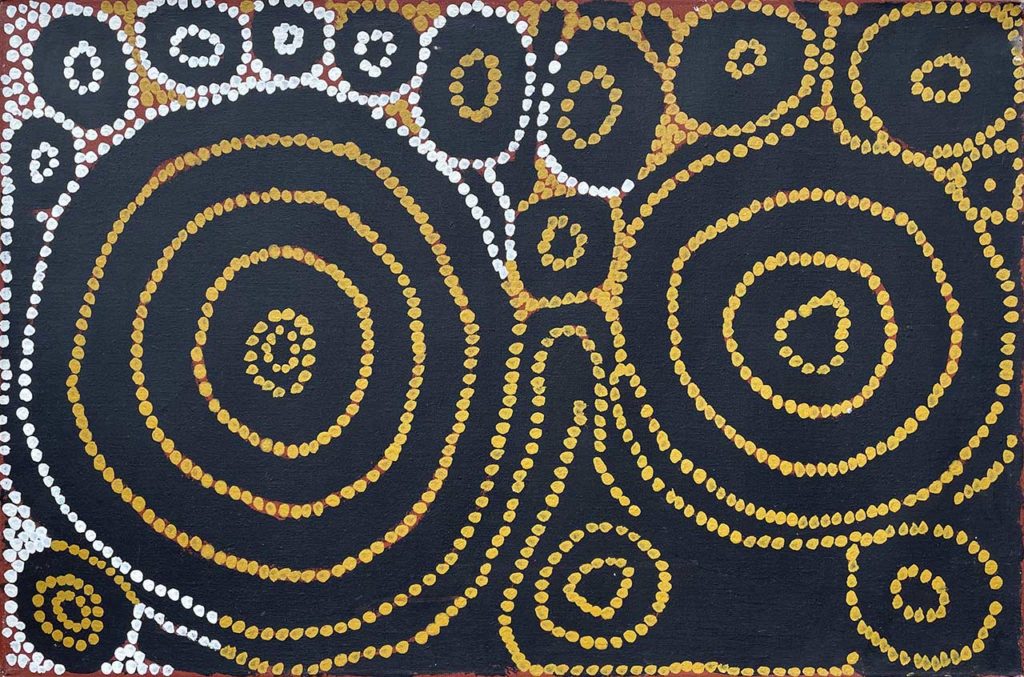
You knew him very well, can you paint us a picture of his character?
He was one of the most impressive men I've ever met. He just exuded power and strength and certainty. The way he held himself. He was also mischievous and he had an incredibly wicked sense of humour. He used to tease. We had a bookkeeper who worked in the offices behind the art studio, and she couldn't get to her office without him teasing her. There would be this dancing as you went by or laughing about something. He just loved to laugh, and he was a very engaging character.
I remember Ian from Japinka was visiting. It was the initial art trade meeting. I was a Secretary and Ian had another position in that organisation. We went back to Gallery Gondwana and we walked towards the back where the kitchen was to make some tea. Dr. George was sitting in the kitchen on the ground when we walked in. He was in the middle of healing somebody. As he turned around, his whole mouth was full of blood because he'd been taking out a bone or something that was not meant to be, they used to call it bones. It was quite a moment.
This particular fellow had a very bad knee. So Doctor was actually taking something out of his knee. We don't know how this happens. I suppose, the only thing I could think of is similarities that may have been in the Philippines where you have the traditional healers. You read about them doing similar things. That's how Doctor would operate. He would be sitting on the floor of our kitchen healing this man. He wasn’t disturbed by us walking in. He just kept on doing his healing. He would do this type of work whenever people came to see him for his help..
Do you have a favourite story that you like to tell about this artist?
He had a great influence on everybody who worked with him. He came from a completely different era, a completely different time. It just felt like a privilege to have known him throughout his time. I always felt incredibly comfortable with him. When I look at all the photographs and us together, it was often us sitting closely to him or laughing with him.
Tess Matthews is back working with me. She was working with me at that time and she's in the room now. She has just reminded me, "My shoulder." Dr George healed her shoulder after she'd been injured in a car accident. She didn’t talk about her pain but he knew she was really sore. He came up to her and laid his hands on her. Later, she told us it really hurt at the time, but afterwards, it was healed.
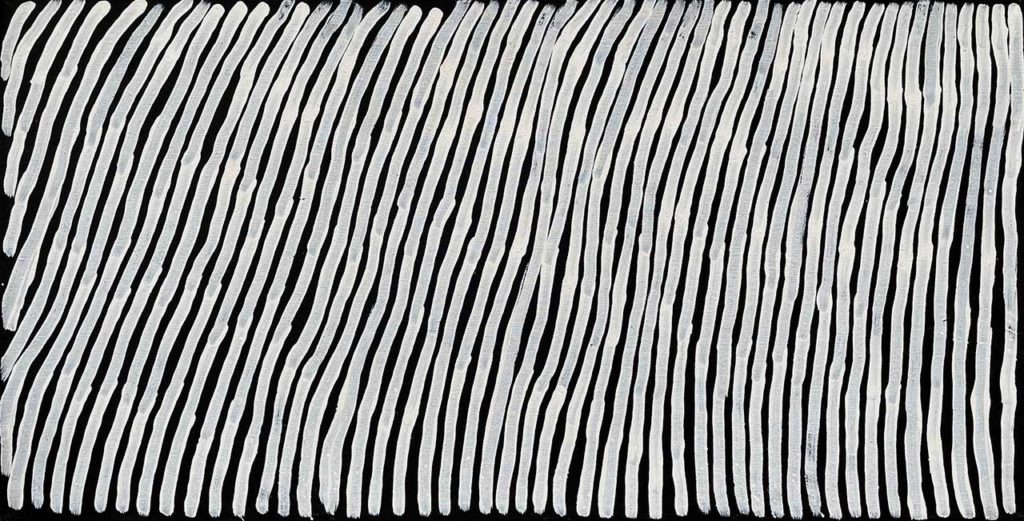
How often did he come to the studio to paint?
He would paint every day if he was in Alice Springs. He wanted to paint, but a lot of the time, he would be out bush moving around. When he came to Alice Springs, he would come to the gallery and paint. Sometimes he would stay and paint for months at a time. He would come in and ask Danny, our Studio Manager, for the size canvas he wanted and the paint he needed. He would sit and paint, often with people by his side. He liked to sing as he painted.
Is there any particular collector or acquisition event that stands out for you?
I remember we did a show with the Alliance Francaise in Canberra, and it was called Painting the Desert and it was a fantastic show. The French embassy purchased some work, as did several other major collectors. Work by Dr George can be found in a large number of bigger collections. These include the Museum and Art Gallery of the Northern Territory( MAGNT), National Gallery of Victoria (NGV), Artbank, Levy Kaplan Collection, Seattle, the Janet Holmes à Court Collection and the Supreme Court of Northern Territory. He is a well-known and well-respected artist and cultural leader.
